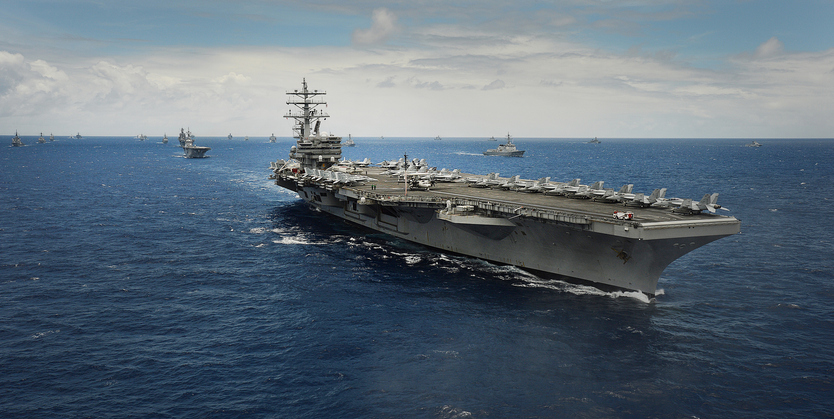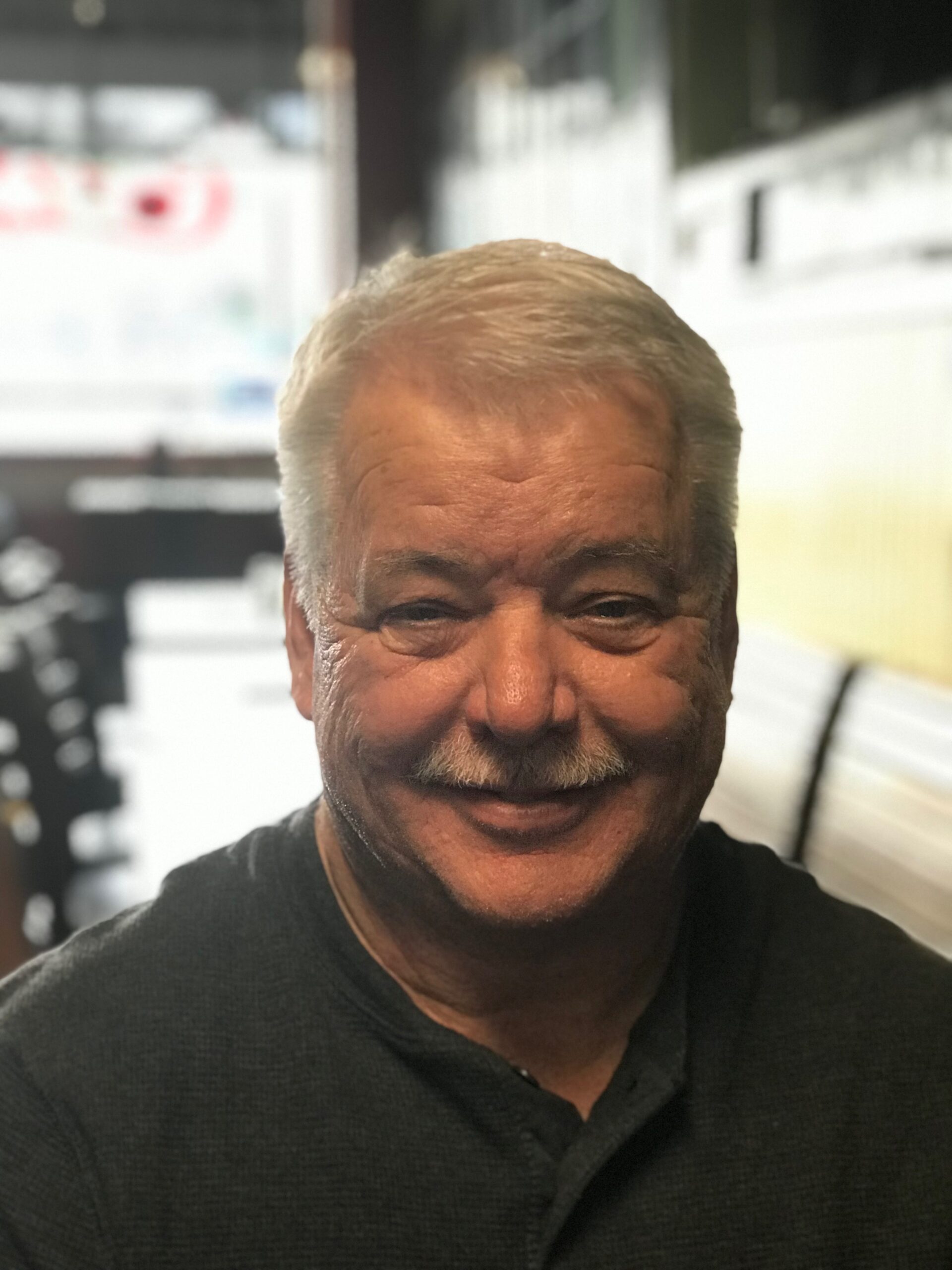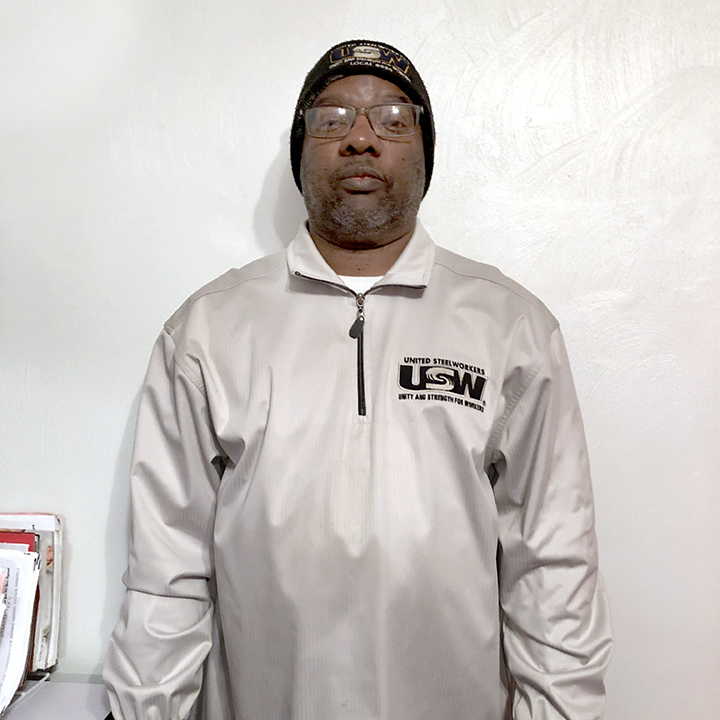
Building Freedom
Pride wells up in Erica M. Brinson when she thinks about her work helping to build aircraft carriers and submarines at Newport News Shipbuilding in Virginia.
Those ships and subs defend America’s shores and much of the free world. The men and women serving on them trust that every screw, every weld, will hold up under the most punishing conditions that weather or war can unleash.
“We have a lot of people’s lives in our hands,” Brinson, a member of United Steelworkers Local 8888 who works in the shipyard’s tool rooms, explained.
Brinson and more than 9,700 other USW members at the sprawling shipyard do patriotic work. The same is true of members of USW Locals 1165 and 9462, who work at ArcelorMittal plants in Coatesville and Conshohocken, Pa., that make armor plate for Navy ships and other products for the military.
And it’s true of USW members at other plants across the country that supply materials and parts to the military.
Every day, these workers contribute their skills, knowledge and strong-as-steel work ethic to the nation’s defense. The Navy is only as formidable as the fleet it operates, and USW members at Newport News deliver the highest-performing carriers and subs on the planet.
“It’s up to us to provide the Navy with what it needs to keep us safe,” said Brinson, who has worked at the shipyard for 12 years. “They’re fighting for us.”
On Saturday, the anniversary of Pearl Harbor, USW members joined military leaders, elected officials and thousands of guests in christening the Navy’s newest aircraft carrier, the future USS John F. Kennedy.
Construction has taken four years so far, and the christening marked the ship’s partial completion. Incorporated into the design are more than 23 new technologies, including the latest propulsion, radar and aircraft-launching systems. The Kennedy will carry up to 90 planes.
Nearly 1,100 feet long and weighing 100,000 tons, the Kennedy is awe-inspiring. The ship is expected to be commissioned—officially put into service—in 2022.
“It’s like a milestone every time a ship gets finished,” said Cary Harris, a mobile equipment operator and former welder who’s worked at Newport News for 31 years.
If the Kennedy makes the news in future years, he said, workers will reminisce about building it and brag to family members about their role.
In April, dignitaries will gather in Wilmington, Del., for another ceremony. This time, they’ll commission the fleet’s newest sub, the USS Delaware, under construction at Newport News for three years.
It’s 377 feet long and weighs 7,800 tons. Like the Kennedy, it’s a wonder to behold.
These vessels symbolize America’s might. They send a chill down the spine of the nation’s adversaries. The world knows that when America talks tough, “we have the power to back it up,” Harris said.
These ships and subs are a remarkable testament to the crucial work that USW members—many of them veterans of the armed forces—do.
“We always say we’re building freedom. It’s as simple as that,” said Milton D. Bates Jr., a welder who’s worked at the shipyard for nearly 34 years.
Harris served 10 years on active duty in the Army—most of that time overseas—and 12 years in the National Guard. Bates served in the National Guard for 20 years, including periods when he was deployed full time in the U.S. Now, they’re among hundreds of veterans working at Newport News.
Those veterans cement the partnership between the USW and the military. And they’re the reason Local 8888 has embraced the USW’s Veterans of Steel program, which provides special resources and opportunities to members who served in the armed forces.
Newport News is the only shipyard in the nation building nuclear-powered carriers, and it’s one of only two in the country building nuclear-powered Virginia-class subs. That means the Newport News workers and those supplying the shipyard are integral to the fleet modernization campaign the Navy has underway.
Last winter, the Pentagon ordered two more carriers from Newport News. Last week, the Pentagon awarded a $22.2 billion contract, its largest shipbuilding project ever, for nine more Virginia-class nuclear submarines to be completed by 2029. Five of those will be delivered from Newport News.
The shipyard also is working on the Navy’s new Columbia-class ballistic missile submarine program.
That activity affects plants like the ArcelorMittal facilities in Coatesville and Conshohocken. The Conshohocken plant is now for sale, and Kameen Thompson, president of Local 9462, said the new submarine contract could prompt the next owner to reopen the rolling mill and hire 50 to 60 people.
In addition to armor plate for the Navy, the workers make steel for Mine-Resistant Ambush Protected (MRAP) vehicles designed to withstand improvised explosive devices (IEDs). Thompson estimated that 80 percent of the plant’s work is for the military and that one-third of the plant’s 93 workers are veterans or have children who serve.
“We are a very unique mill,” he said. “We have always had veterans who made steel to protect this country.”
Workers at the Coatesville plant also have produced steel for the military for decades. In fact, when he served on the aircraft carrier USS Nimitz in the 1980s, Local 1165 President Vonie Long saw a stamp on a steel plate indicating it was made by USW members at Lukens, ArcelorMittal’s predecessor.
When it goes into service, the John F. Kennedy will replace the Nimitz, Long’s old ship. He said workers at Coatesville melted steel from the old John F. Kennedy, an aircraft carrier decommissioned in 2007, and recycled it for use in the new ship.
“A lot of my co-workers take pride when they see these orders from the military come through,” he said.
When he took the job at Newport News, Harris didn’t think it would be anything special. But he quickly changed his mind.
These days, as he drives around the shipyard delivering huge pallets of materials and parts, Harris takes note of the U.S. flags that workers in various departments fly at their work stations.
“They’re proud of America,” he said. “They’re proud of what they do.”
***
Photos of Cary Harris and Milton D. Bates Jr. Image of aircraft carrier by Getty Images
By clicking Sign Up you're confirming that you agree with our Terms and Conditions.
Related Blogs
Ready to make a difference?
Are you and your coworkers ready to negotiate together for bigger paychecks, stronger benefits and better lives?

